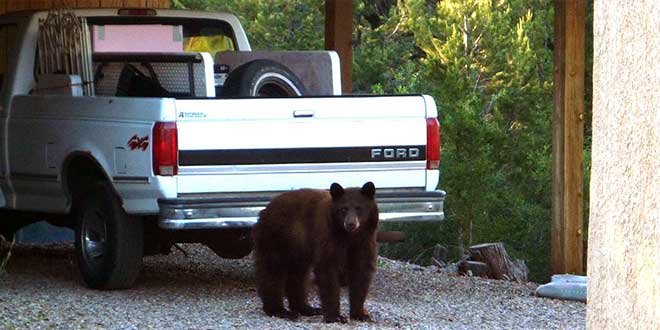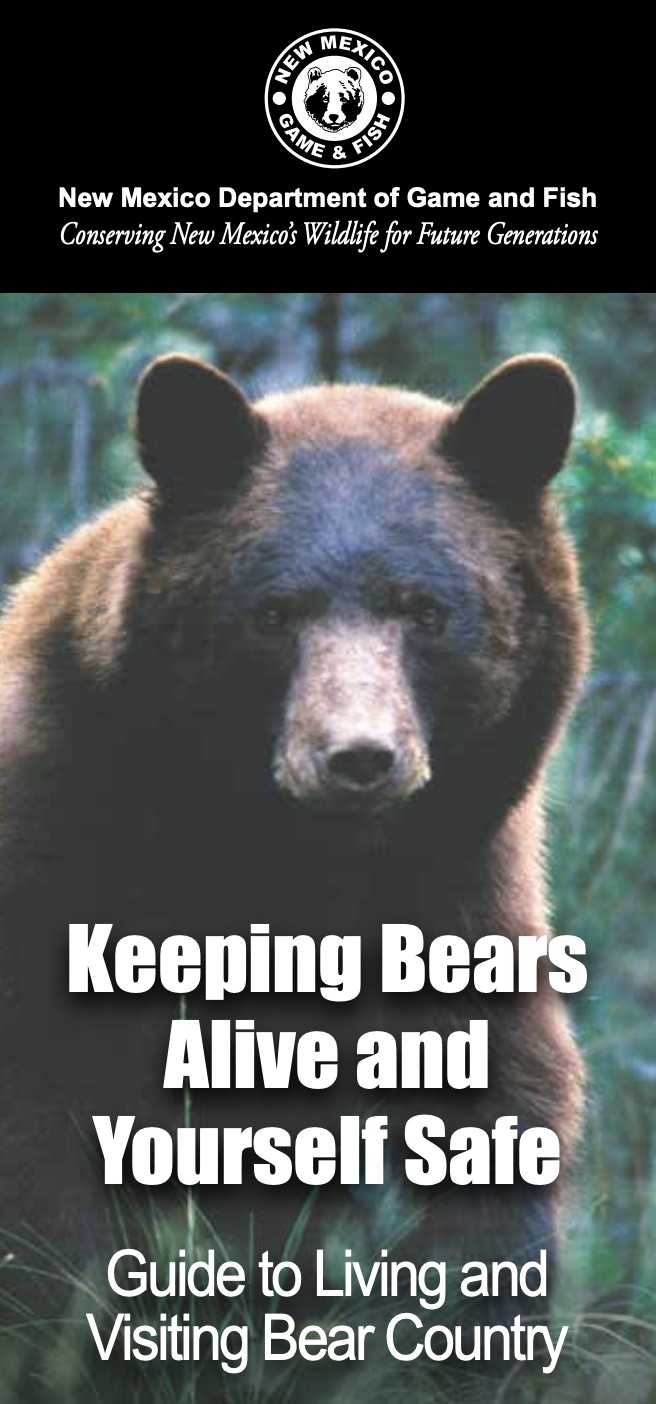2020 was a year that will be hard to forget for most of us due to the pandemic. It was also a year that brought little to no moisture to many parts of New Mexico. Now, with 2021 close on last year’s heels with little to no moisture, we are likely to see an increase in wildlife activity, especially in urban areas that have resident bear populations as they move around looking for food and water.
New Mexico is home to a unique subspecies of black bears: the aptly named New Mexico black bear (Ursus americanus amblyceps), which also occupies portions of Arizona, Colorado, Utah and Texas. Colors can be black, brown or cinnamon, but all are considered black bears. Adult black bears weigh between 125 and 600 pounds, and their cubs weigh 10 to 16 ounces at birth and are born while the mother is in the den during the winter. Black bears can run up to 35 mph, climb trees and swim well.
Many places in New Mexico butt up against mountain ranges with good bear populations, including Santa Fe, Albuquerque and Ruidoso. During years of little to no rainfall, we often see these bears traveling off their home range into the outskirts of these towns, looking for food and water. Although you may not realize it, your yard could be just the place these bears are looking for. Fruit trees, bird feeders and koi fish ponds are excellent buffets for these animals.
Understanding the signs of a visiting bear when it first appears and taking a few simple steps will help divert it back to the mountains where they belong. The quicker one discovers that a bear is visiting and makes changes, the less likely a bear encounter will occur. Here are a few things that can tell you that a bear is visiting your yard:
- Scat or droppings.
- Bear tracks.
- Torn-down bird feeders.
- Ripened fruit that has fallen to the ground is eaten.
- Your garbage can is overturned and trash is everywhere.
As I stated above, taking quick action can help reduce bear/human contact and keep you and your pets safe. Taking preventive measures before these animals start to wander looking for food and water will help significantly reduce the probability of a bear visiting your yard. Here are some preventive steps one can take as a homeowner:
- Garbage: Store it in closed, sturdy cans kept inside a secure garage. Do not put out the trash the night before a scheduled pickup.
- Pet food: Feed pets indoors. Store food in secure metal cans inside a sturdy shed or garage. Make sure the garage door is closed at night.
- Bird feeders: Set out only enough birdseed to last throughout the day. Hummingbird feeders should be brought inside at night. Hang bird feeders from trees, not on the porch or from the house rafters.
- Fruit trees: Plant fruit trees away from your house. Fruit should be picked as it ripens. Spoiled fruit that falls to the ground should be removed because it will attract bears.
- Woodpiles: Keep woodpiles away from the house. They attract rodents, which bears eat.
- Compost piles: Keep piles away from the house. Do not add melon rinds or other fragrant fruits.
- Beehives and chicken pens: Livestock and beehives should be kept away from your house. Protect them with electric fencing.
- Barbecues: Clean after each use and store in a closed sturdy shed or garage.
Remember, bears are wild animals, and you should never put yourself in a position that could get you injured. If you live in bear country and the bear is just passing through your yard, watch it from the safety of your home. Your safety and the welfare of bear populations are important to the New Mexico Department of Game and Fish. If you have additional questions about black bears, give us a call at 1-888-248-2866 to speak with a professional or view our brochure on keeping bears alive and you safe at https://www.wildlife.state.nm.us/download/publications/wildlife/Keeping-Bears-Alive-and-You-Safe.pdf.
 New Mexico Wildlife magazine Conserving New Mexico's Wildlife for Future Generations
New Mexico Wildlife magazine Conserving New Mexico's Wildlife for Future Generations

